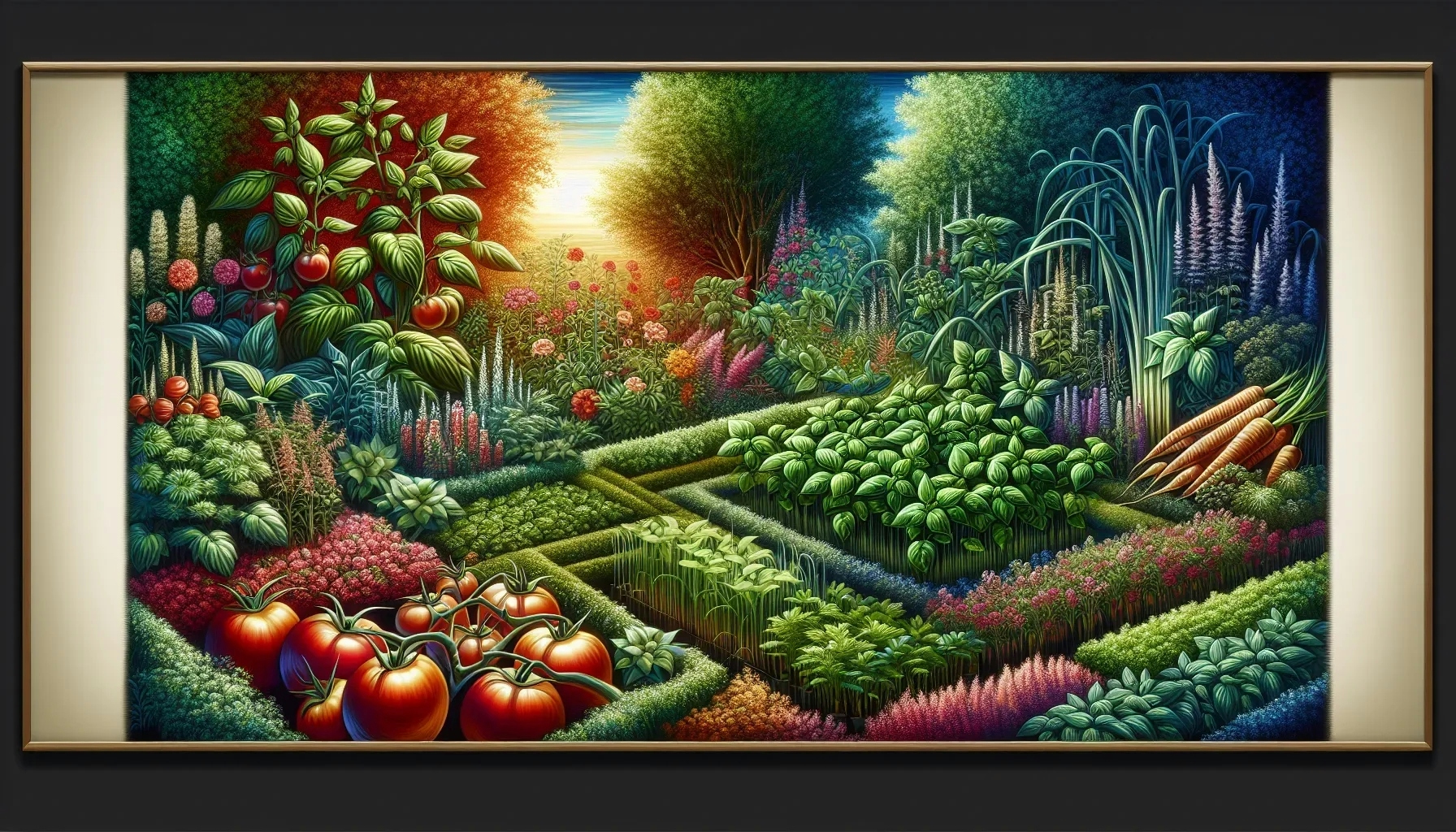What Are Some Memorable Experiences With Companion Planting?
Delving into the world of companion planting, we sought out the expertise of gardening professionals and received four inspiring stories. From an award-winning edible garden to a tale of bountiful kūmara, these experiences showcase how companion planting blends traditional wisdom with creativity for holistically beneficial outcomes.
- An Award-Winning Edible Garden
- A Blogger's Garden-Tested Recommendations
- Marigolds Boost Tomato Harvest
- Local Wisdom Yields Bountiful Kūmara
An Award-Winning Edible Garden
Companion planting is a fabulous technique where plants are specially selected and positioned next to one another to support each other to thrive. It is a wonderful gesture of natural symbiosis. Ways in which this process works might include one plant naturally deterring insects that may otherwise feast on the other; otherwise, it can also mean attracting pollinators to neighboring plants or providing shelter or shade. The technique also avoids using harsh chemicals that may otherwise be used for protection, and with a greener world being one of our main aspirations, this is a truly marvelous method.
While I integrate this technique often into planting plans, a very special experience that I reflect upon fondly occurred during the summer of 2011. It was during a particularly hot few weeks, with the merciless sun beating down on our backs, that we constructed 'The Potential Feast,' a garden that would go on to be awarded Silver Gilt at the renowned RHS Hampton Court Palace Flower Show.
The very special thing about this garden was that all the plants were edible. This was an exhilarating and valuable expression of creativity, particularly in the context of health and sustainability. The challenge that goes along with creating a garden that is so delectable is that it is not only human beings that enjoy the taste. We were unyielding regarding the use of chemicals, making companion planting an enchanting solution.
A few exemplary pairings include the spectacular and aromatic duo Laurus nobilis (Bay Laurel) with Lavandula a. 'Munstead' (Lavender). The fragrant green leaves of the Bay Laurel alongside the deep purple hues and soothing aroma of Lavender are exquisite. The two are both a delightful addition to an outdoor space, both being natural repellents of mosquitoes and flies. Their naturally contrasting heights and textures create intrigue and outstanding visual appeal.
Olea europaea (Olive tree) with Rosa 'Felicia' (Rose) form a beautiful companionship. The timeless elegance of the olive tree stands tall with pale silver-green leaves that shimmer ethereally in the sunlight, nestled against it, Rosa 'Felicia' can bloom with her delicate petals attracting the gentle buzz of bees and butterflies. The allure of the rose benefits the olive tree's pollination, demonstrating a mesmerizing collaboration.
These are just a few of the many marvelous combinations that can be used to create well-balanced and self-protecting ecosystems.

A Blogger's Garden-Tested Recommendations
I have had many years of testing out different companion planting, and there are a few that have worked well for me. Here are a few companion plantings I would recommend.
1. Marigolds: Marigolds pair well with almost any plant. They have a naturally strong scent that repels garden pests, like aphids, mosquitoes, and nematodes. Some of my favorite companion plants with marigolds are cucumbers and squash.
2. Rosemary, Lavender, and Sage: All of these herbs have very similar growing conditions. That is what makes rosemary, lavender, and sage great companion plants. They all like full sun and heat. They require little watering and don't need to be over-fertilized.
3. Parsley and Tomatoes: Parsley is actually a natural deterrent of the tomato hornworm, making it a great one to plant next to tomatoes. I have also found that parsley can handle a little bit of shade, so it can be planted close to a tomato plant while still letting it thrive.

Marigolds Boost Tomato Harvest
My standout experiences with companion planting happened when I first started gardening at home. I tried growing marigolds next to my tomatoes to naturally keep pests away—specifically nematodes—without resorting to harsh chemicals. The outcome was quite remarkable. The marigolds not only added a splash of color to my garden but also significantly lowered the pest attacks on my tomatoes. This approach resulted in a healthier and more fruitful tomato crop than what I had seen in the past. This event really drove home for me the value of companion planting as a way to garden more sustainably. It also increased my appreciation for the complex interactions between plants that can lead to improved health and productivity of crops.

Local Wisdom Yields Bountiful Kūmara
I once tried companion planting in my own backyard here in NZ, mixing it up with some local wisdom. I planted kūmara (sweet potato) alongside marigolds and lavender. Sounds a bit out there, right? But here's the kicker—the marigolds helped keep the pesky bugs away from my kūmara, and the lavender attracted bees and beneficial insects, giving the kūmara a bit of a pollination boost.
The result was a bumper crop of kūmara, healthier than I'd ever seen, and the garden was buzzing with life, literally. The lavender and marigolds brought in a lot of bees, and I noticed fewer pests munching on the kūmara. It was like the plants were looking out for each other.
This experiment turned my garden into a mini ecosystem where everything worked together. It showed me how traditional knowledge and a bit of creativity can lead to amazing results. Plus, it was pretty neat seeing nature do its thing, all while getting a tasty harvest out of it.


